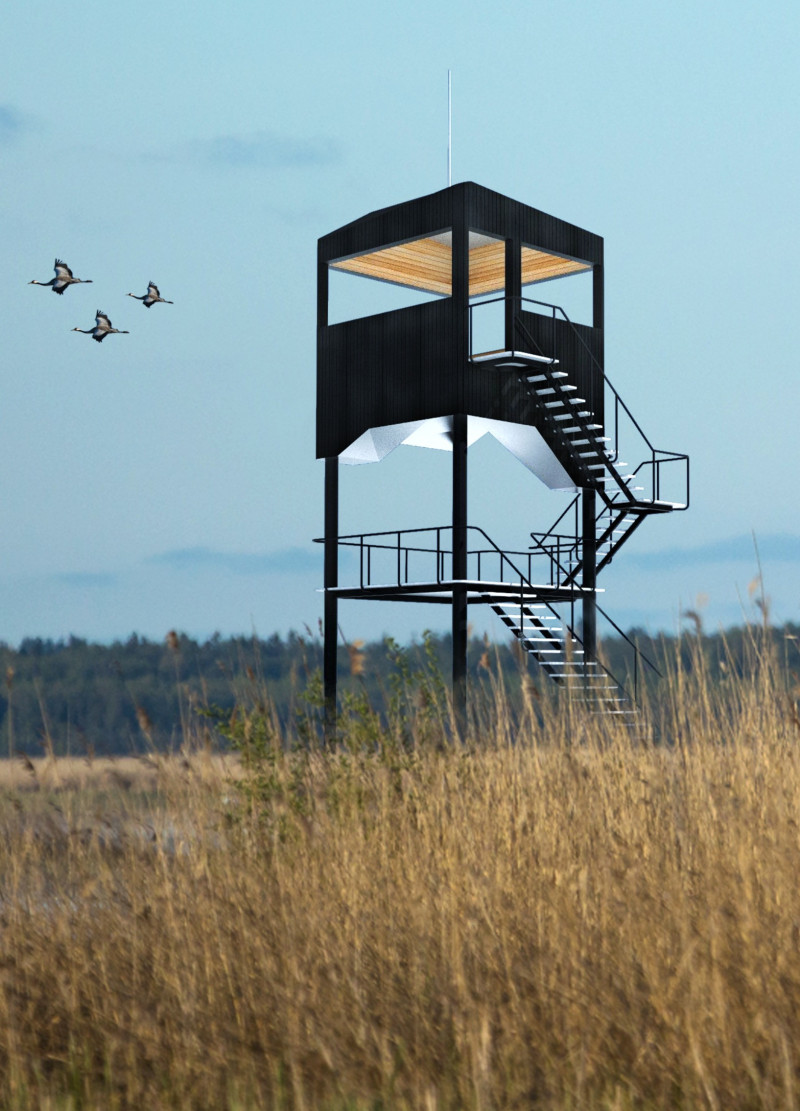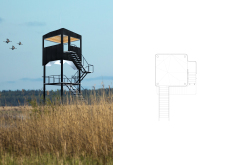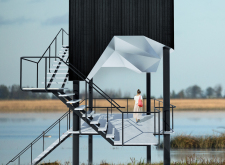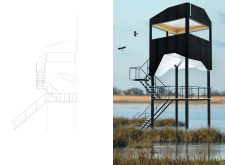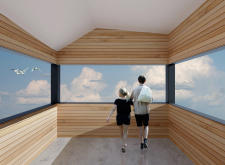5 key facts about this project
### Project Overview
The observation tower is situated within a wetland ecosystem, designed as a facility for ecological observation and recreation. Its primary audience includes wildlife enthusiasts and nature observers. The design emphasizes the relationship between the built environment and the natural landscape, highlighting the importance of ecological awareness.
### Structural Form and Space Utilization
The tower's vertical form enhances visibility over the wetland, creating an engaging landmark. A multi-level structure facilitates diverse experiences, encouraging users to explore various heights. Transition areas within the design assist in navigating between indoor and outdoor spaces, fostering an intuitive flow for visitors. Flexible observation platforms at multiple levels accommodate different group sizes and activities, ranging from solitary birdwatching to group education sessions.
### Material Selection and Sustainability
The exterior features black-stained wood cladding that contrasts with the landscape and offers fire-resistant properties. A structural steel framework ensures stability while maintaining a modern aesthetic. Large glass panels maximize views and natural light, fostering a connection with the environment. The concrete base provides durability against the challenges posed by wetland conditions. Sustainable practices are integrated into the design through the use of responsibly sourced materials and efforts to minimize ecological disruption, reinforcing the project's commitment to environmental stewardship.


